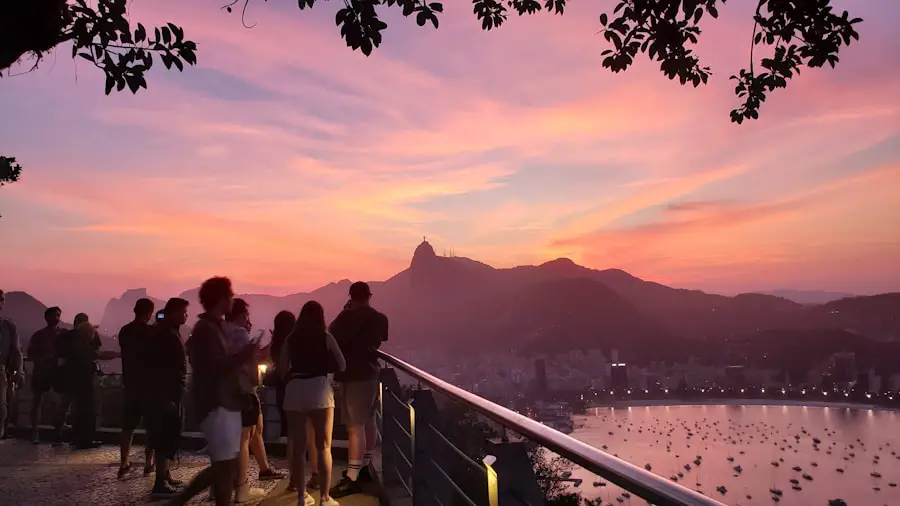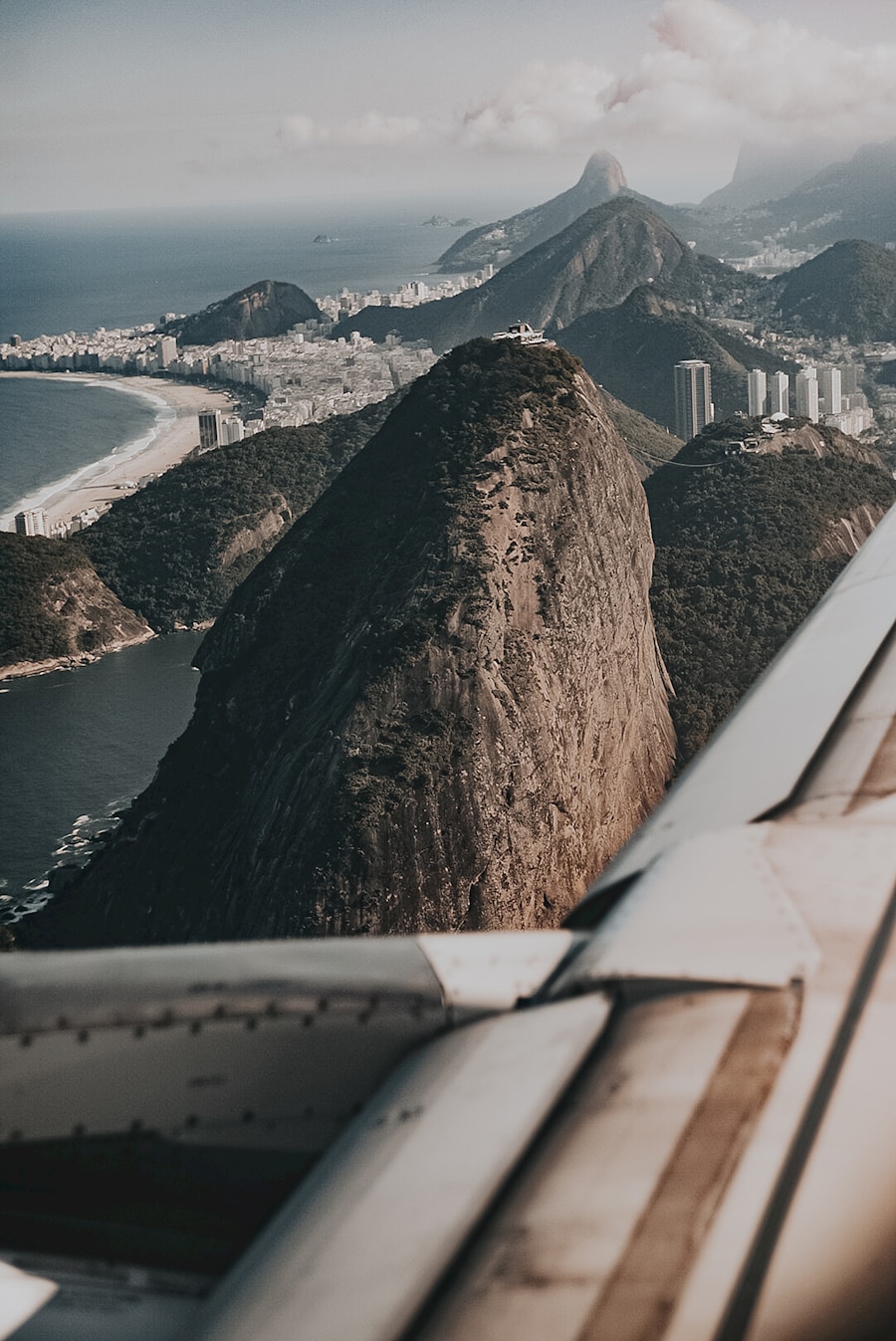Brazil, the largest country in South America, boasts a diverse climate that varies significantly across its vast territory. Spanning nearly 8.5 million square kilometers, Brazil’s geography encompasses everything from the Amazon rainforest in the north to the arid landscapes of the Sertão in the northeast, and from the tropical beaches of Rio de Janeiro to the temperate regions of the south. This climatic diversity is influenced by several factors, including latitude, altitude, and proximity to the Atlantic Ocean.
As a result, Brazil experiences a range of weather patterns that can affect travel plans, agricultural practices, and local lifestyles. Understanding Brazil’s climate is essential for anyone looking to explore its rich cultural heritage and natural beauty. The country is generally characterized by a tropical climate, but it also features subtropical and temperate zones.
The seasons are not as distinctly marked as in temperate regions; instead, they are often defined by rainfall patterns and temperature variations. This article will delve into the seasonal changes in Brazil, highlighting what travelers can expect during each period of the year, as well as the unique festivals and events that punctuate these seasons.
Key Takeaways
- Brazil has a diverse climate, with the north being hot and humid, and the south experiencing cooler temperatures.
- Summer in Brazil, from December to March, is the peak tourist season with hot temperatures and vibrant festivals.
- Fall, from April to June, brings milder temperatures and fewer crowds, making it a good time to visit popular attractions.
- Winter, from July to September, is the off-peak season with cooler temperatures, ideal for exploring the Amazon rainforest.
- Spring, from October to November, offers pleasant weather and is a great time for outdoor activities and sightseeing.
- Brazil hosts numerous festivals and events throughout the year, including Carnival in February and the Festa Junina in June.
- Travelers can save money by visiting Brazil during the off-peak seasons, as accommodation and tour prices are generally lower.
- Consider the climate and festival calendar when planning a trip to Brazil to ensure the best experience based on personal preferences.
Summer: December to March
Beach Life and Warm Weather
During this time, temperatures can soar, particularly in coastal cities like Rio de Janeiro and Salvador, where they often exceed 30 degrees Celsius (86 degrees Fahrenheit). The heat draws both locals and tourists to the beaches, where vibrant scenes of sunbathers, surfers, and beach vendors create a lively atmosphere.
However, this also means that the rainforest is lush and teeming with wildlife, making it an ideal time for eco-tourism.
Festivals and Celebrations
In addition to the warm weather, summer is also a time of celebration in Brazil. The world-renowned Carnival takes place in February or early March, depending on the year. This festival is marked by extravagant parades featuring samba schools competing for glory in Rio de Janeiro’s Sambadrome. Beyond Carnival, summer also hosts various regional festivals that showcase local traditions and culinary delights. For instance, the Festival de Verão in Salvador celebrates Bahian culture with music performances and food stalls offering traditional dishes like acarajé and moqueca.
Fall: April to June

As summer transitions into fall from April to June, Brazil experiences a shift in weather patterns. The temperatures begin to cool slightly, particularly in southern regions like São Paulo and Porto Alegre, where average highs drop to around 20-25 degrees Celsius (68-77 degrees Fahrenheit). This period is characterized by less humidity and more stable weather conditions, making it an excellent time for outdoor activities such as hiking and exploring national parks.
The Amazon rainforest continues to receive rainfall, but it begins to taper off as the season progresses. Fall is also a time for cultural reflection and celebration in Brazil. One notable event is the Festa de São João, celebrated primarily in the northeastern states like Pernambuco and Paraíba.
This festival honors Saint John the Baptist and features traditional music, dance, and food. Bonfires are lit, and people gather to enjoy quadrilha dances while indulging in seasonal treats such as corn-based dishes and sweet treats made from peanuts. The atmosphere is festive and communal, showcasing Brazil’s rich cultural tapestry.
Winter: July to September
| Metrics | Data |
|---|---|
| Average Temperature | 15°C |
| Rainfall | 100mm |
| Snowfall | 20cm |
| Sunshine Hours | 5 hours per day |
Winter in Brazil spans from July to September and is marked by cooler temperatures, particularly in the southern regions. Cities like Curitiba and Florianópolis can experience chilly weather with temperatures dropping to around 10 degrees Celsius (50 degrees Fahrenheit) at night. In contrast, northern regions such as Manaus remain warm year-round due to their tropical climate.
This season is generally drier than summer, making it a favorable time for travel across many parts of the country. One of the most significant events during winter is the Festa do Pato in the town of Biritiba-Mirim, located near São Paulo. This festival celebrates local cuisine with a focus on duck dishes, showcasing traditional recipes passed down through generations.
Visitors can enjoy a variety of culinary delights while participating in cultural activities such as folk dances and music performances. Additionally, winter is an excellent time for wine lovers to explore the vineyards of the Serra Gaúcha region in southern Brazil, where cooler temperatures contribute to high-quality wine production.
Spring: October to November
Spring in Brazil occurs from October to November and is characterized by a gradual warming trend as temperatures rise again after winter’s chill. This season is particularly pleasant for travel, as many regions experience mild weather with plenty of sunshine. In cities like Rio de Janeiro and Brasília, average temperatures hover around 25-30 degrees Celsius (77-86 degrees Fahrenheit), making it ideal for outdoor exploration and beach activities.
Spring also heralds a series of vibrant festivals across Brazil. One notable celebration is the Oktoberfest in Blumenau, which pays homage to German culture through traditional music, dance, and food. This festival attracts thousands of visitors who come to enjoy hearty German cuisine alongside local craft beers.
Additionally, spring is a time when many Brazilian cities host flower festivals that celebrate the blooming flora of the season. These events often feature parades adorned with colorful floral arrangements and artistic displays that reflect Brazil’s rich biodiversity.
Festivals and Events

Regional Celebrations
In addition to Carnival and Festa de São João, other notable events include Parintins Folklore Festival in Amazonas during June, which celebrates indigenous culture through theatrical performances depicting local legends. The festival features colorful costumes and elaborate floats that bring stories to life while engaging audiences with traditional music and dance.
Rodeo and Country Music
Another significant event is the Festa do Peão de Barretos held in August in São Paulo state; this rodeo festival attracts thousands of visitors who come to witness bull riding competitions alongside live country music performances.
Religious Festivals
Moreover, religious festivals play an essential role in Brazilian culture. The Feast of Our Lady of Aparecida on October 12th honors Brazil’s patron saint with processions and celebrations across the country. These events often blend religious devotion with local customs, creating a unique atmosphere that reflects Brazil’s spiritual diversity.
Budget Considerations
Traveling to Brazil requires careful budget planning due to varying costs associated with different regions and seasons. While some areas may be more affordable than others, factors such as accommodation prices, transportation costs, and dining expenses can fluctuate significantly depending on when you visit. For instance, traveling during peak tourist seasons like summer or Carnival can lead to inflated prices for hotels and flights.
To maximize your budget while experiencing Brazil’s rich offerings, consider traveling during shoulder seasons—those periods just before or after peak times—when prices tend to be lower but weather conditions remain favorable. For example, visiting during fall or spring can provide a balance between pleasant weather and reduced costs compared to summer or winter holidays. Additionally, exploring local markets for meals rather than dining at tourist-oriented restaurants can help stretch your budget further while allowing you to savor authentic Brazilian cuisine.
Public transportation options such as buses or metro systems are often economical alternatives for getting around major cities compared to taxis or rideshare services.
Choosing the Right Time to Travel
Selecting the ideal time to visit Brazil hinges on personal preferences regarding climate conditions and cultural experiences. Each season offers distinct advantages that cater to different interests—whether it’s basking on sun-kissed beaches during summer or immersing oneself in local traditions during fall festivals. Ultimately, understanding Brazil’s diverse climate patterns allows travelers to make informed decisions about when to embark on their journey through this captivating country.
By considering factors such as weather conditions, regional events, and budget constraints, visitors can curate an unforgettable experience that showcases all that Brazil has to offer throughout its vibrant seasons.
If you are planning a trip to Brazil, it is essential to consider the best time to visit this beautiful country. According to a recent article on TakeTravelInfo, the ideal time to travel to Brazil is during the dry season, which typically falls between May and September. This period offers pleasant weather and fewer crowds, making it the perfect time to explore all that Brazil has to offer.
FAQs
What is the best time to travel to Brazil?
The best time to travel to Brazil is during the dry season, which runs from May to September. This is when the weather is generally mild and there is less chance of rain.
What is the weather like in Brazil during the best time to travel?
During the dry season, the weather in Brazil is generally mild and pleasant, with temperatures ranging from 70°F to 80°F. There is also less chance of rain during this time.
Are there any specific events or festivals to consider when planning a trip to Brazil?
Yes, Brazil is known for its vibrant festivals and events, such as Carnival in February and the Festa Junina in June. These events can be a great addition to your travel plans and are worth considering when planning your trip.
Are there any specific regions in Brazil that are best to visit during the best time to travel?
During the dry season, popular destinations in Brazil such as Rio de Janeiro, Sao Paulo, and the Amazon rainforest are great to visit due to the mild weather and less chance of rain. However, it’s important to note that Brazil is a large country with diverse climates, so it’s best to research specific regions based on your interests.
